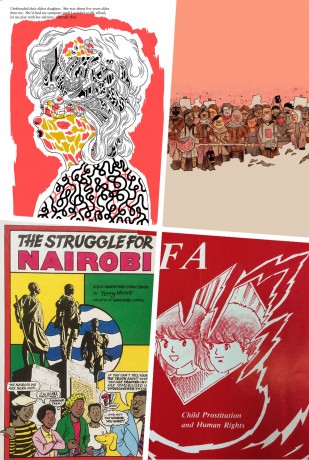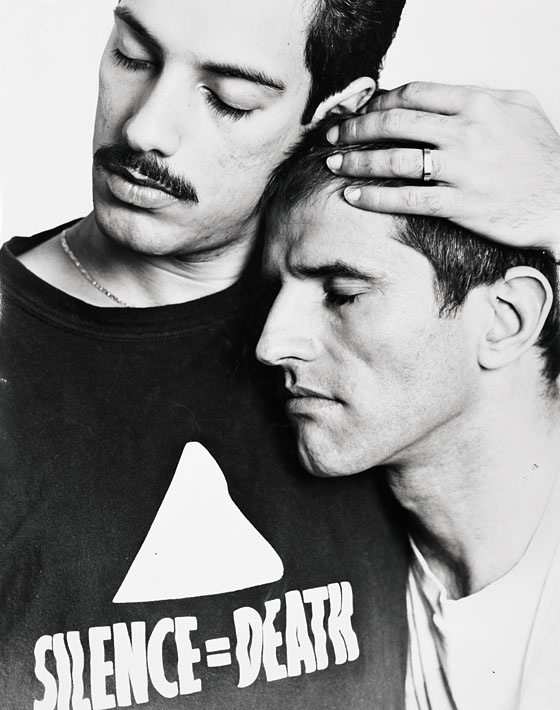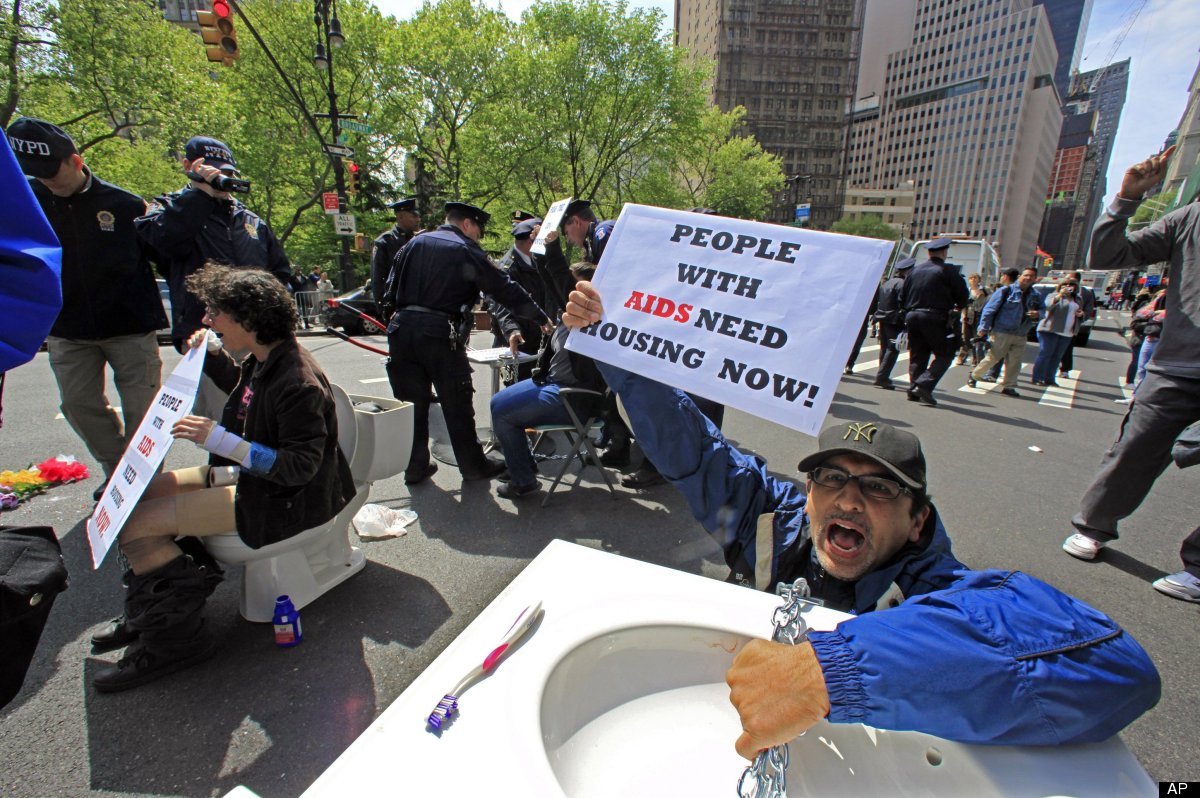- DeFilippis, J. and Saegert, S. (2012) “Communities Develop: The Question is, How?” from The Community Development Reader, p. 1-7.
- DeRienzo, H. (2012). “Community Organizing for Power and Democracy: Lessons Learned from a Life in the Trenches,” from The Community Development Reader p. 244-248.
 Portrait of South Bronx community action group Banana Kelly, New York, New York, March 23, 1979. (Harry DeRienzo is the founder and director of Banana Kelly)
Portrait of South Bronx community action group Banana Kelly, New York, New York, March 23, 1979. (Harry DeRienzo is the founder and director of Banana Kelly)
Today we discussed several key concepts that pertain to shaping the future of NYC and your group projects. Here are some highlights from the readings, our discussion and your reading responses..
As Defilippis & Saegert (and Ashley) point out: Even in this global world, people are still “place-based”- in neighborhoods and communities. According to DeRienzo…
- Neighborhoods are a housing service cluster defined geographically
- Communities are people in relationships defined by common conditions, practices, problems, and goals (i.e. Flushing residents worried about rezoning, South Bronx residents in opposition to Fresh Direct, residents that will be affected by the BQX, New Yorkers struggling to access mental health services).
According to Defilippis and Saegert…
- Place-based communities are the most basic, fundamental unit through which people interact, sustain their familial lives, and act collectively to face commonly shared issues; they shape people’s individual lives and perspectives and serve as the grounding support for the larger-scale organizations of economy and government (Libby); Thus they are economically interdependent and have the potential to be politically powerful (Tony) if they develop and exercise collective capacity.
- However, as Defilippis & Saegert explain, place-based communities are caught in a contradictory dynamic: (Place-based) communities and community development are necessary for our current mode of production/political economic system (global capitalism) to function; but that very system is making it increasingly difficult for communities to develop in dignified and just ways- its priorities are not on meeting human needs or cultivating relationships that help meet those needs, but rather on economic growth and expansion (Mohomed). As capitalism grows and expands, place-based communities have less and less control over the means of production (the materials, relationships, and practices) used to produce capitalist goods and commodities) and of social reproduction (the materials, relationships, and practices) used to take care of, educate, etc. ourselves and each other, aka the labor force.

In any case, “Communities develop, the question is, how?” (Defilippis & Saegert)
- Government policies can help to develop or disintegrate/disempower communities. In the case of Flushing (Claudia), the BQX (Edwin, Mohamed), and Fresh Direct (Ashley), government policies and top-down planning have prioritized economic growth and place-based communities have had very little if any control, which helps to explain why they’re so upset!
- Communities can also organize themselves to help each other and/or fight for community control (over different aspects of production and/or social reproduction), i.e. neighborhood planning (Fanny, Christine)
DeRienzo suggests there are 2 models of community organizing:
- The Static Enhancement Model, which tries help community members cope, survive, and thrive in spite of their shared problems (i.e. if South Bronx Unite were to give oxygen masks to residents to help them breathe through the pollution brought by Fresh Direct- Amir; or, as Friends of Brook Park are doing below, planting a community garden…)
 And the Transformative Model, which aims to address the root causes of shared problems and achieve shared goals. (ie. South Bronx Unite protesting the relocation of Fresh Direct to the neighborhood)…
And the Transformative Model, which aims to address the root causes of shared problems and achieve shared goals. (ie. South Bronx Unite protesting the relocation of Fresh Direct to the neighborhood)…

In either case, community organizing involves building relationships, informing community members (Amir, Libby), and taking steps together (i.e. showing up to a meeting about the Flushing rezoning, speaking up, and signing a petition (Claudia).
As you proceed with your projects please consider the following (riffing on Libby): What are the commonalities of the community/communities your project addresses? What economic, social, and political factors are driving the need for community organizing? What kind of community organizing is already going on, and how can these efforts be made more transformative? Most importantly, how can your group help?
Finally, here are some articles and secondary data analyses that pertain to contemporary community struggles across the U.S….
- Living from rent to rent: Tenants on the edge of eviction (March 29, 2016)
- Low-income Americans can no longer afford rent, food, and transportation (March 30, 2016)
- In a high rent world, affordable, safe housing is hard to come by (March 30, 2016)
- The Gap: documents a shortage of 7.2 million affordable and available rental units for the nation’s 10.4 million extremely low income (ELI) renter households, those with income at or below 30% of their area median (AMI). Three-quarters of ELI renters are severely cost-burdened, spending more than half of their income on rent and utilities.
- Mapping America’s Rental Housing Crisis: an analysis representing a best estimate of the affordable rental housing gap and federal assistance for extremely low-income (ELI) renter households by county in the United States.
- With ‘gigs’ instead of jobs, workers bear new burdens (March 31, 2016)
- How the $15 minimum wage went from laughable to viable (April 1, 2016)

The purpose of these activities is to help you sharpen/re-calibrate your focus based on how your research is developing, and to help you determine where you have gaps, what your next steps should be, etc. I encourage you to continue working through these activities in your groups with help from the Craft of Research Worksheet and these guidelines for thinking about policy recommendations (same as what I shared in class today). There’s also the 2nd Edition of The Craft of Research available for free online if you’d like more detailed guidelines.
 Portrait of South Bronx community action group Banana Kelly, New York, New York, March 23, 1979. (Harry DeRienzo is the founder and director of Banana Kelly)
Portrait of South Bronx community action group Banana Kelly, New York, New York, March 23, 1979. (Harry DeRienzo is the founder and director of Banana Kelly)
 And the Transformative Model, which aims to address the root causes of shared problems and achieve shared goals. (ie. South Bronx Unite protesting the relocation of Fresh Direct to the neighborhood)…
And the Transformative Model, which aims to address the root causes of shared problems and achieve shared goals. (ie. South Bronx Unite protesting the relocation of Fresh Direct to the neighborhood)…







